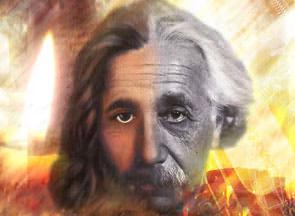by
Damien F. Mackey
This, by far my favourite book on the philosophy of modern sciences, I
have found to be highly enlightening with its explanation of the clear distinction
between science and philosophy – a distinction that is becoming more and more
blurred with the passing of time.
Aquinas and Kant: The
Foundations of the Modern Sciences (1950) is available on-line (for example at: https://archive.org/details/aquinasandkant032149mbp)
Chapter XVIII is the
crucial one, for it is there that Gavin Ardley, following an insight from
Immanuel Kant, puts his finger right on the nature of the sciences, or what the modern scientist is actually doing.
Whilst the precise realisation of this had escaped some of the most brilliant
philosophers of science, it had not escaped Kant – who, however, then managed
to bury this gem of insight under a mountain of pseudo metaphysics.
Other minds went close to
discovering the secret, but failed to recognize the Procrustean nature of
modern science, that is, the active imposition of laws upon nature, rather than, as is generally imagined, the reading of
laws in nature.
Ardley will finally sum up
his findings in this splendid piece (but one will definitely need to read his
chapter XVIII):
Chapter
XXI
THE END
OF THE ROAD
The solution to the problem is now before us. The quest of the modern
cosmologist for a satisfactory harmony of Thomism with post-Galilean physical
science is nearing its goal.
The bifurcation made by the Procrustean interpretation of physics
rescues the dualist theory from the impasse in which it has been
struggling. With our discussion of voluntary active phenomenalism in Ch. XVIII
in view, we can see precisely how there come to be two orders, each autonomous.
The Scholastic metaphysician functions in one order, the modern physicist in
the other, and there is no immediate link whatever between them. There is a
clean divorce between the ontological reality, and the physical laws and
properties which belong to the categorial order.
The link between the physical laws and the underlying causes is no
longer of the first remove but of the second. The fundamental dictum of
Wittgenstein is our guide here. [See p. 98.]: that a law of physics tells us
nothing about the world, but only that it applies in the way in which in fact it
does apply, tells us something about the world.
This all-important consequence of the Procrustean character of modern
physics provides the solution to Phillips’ difficulty. [See p. 224. The
difficulty of course arises from the failure to distinguish the physicists’
data from phenomena. We are careful to distinguish them.] It furnishes the
essential supplement to the otherwise admirable doctrines of O’Rahilly and
Maritain.
This doctrine of the two orders, soundly based, is very much more
satisfactory than such a palliative as hylosystemism.
Now we can retain the Thomist doctrine in all its purity, but we have
added to it another chapter, so that the post-Renaissance physical science may
at last find a home in the ample structure of the philosophia perennis.
It is from Immanuel Kant that this doctrine of the nature of modern
physics ultimately derives. Scholastics thus owe to Kant the recognition that
he, albeit unwittingly, has made one of the greatest contributions to the philosophia
perennis since St. Thomas.
It is commonly stated that St. Thomas showed that there is no
contradiction between faith and profane science. This is true of sciences of
the real. But for sciences of the categorial we must look also to Kant. It is
St. Thomas and Kant between them who have shown that there is no contradiction
possible between faith and any profane science.
Let us now summarise the contents of these chapters.
The Bellarmine dichotomy between what actually is the case, and what
gives the most satisfactory empirical explanation, has all along been the basic
contention of the dualist philosophers. But the absence hitherto of an adequate
explanation of how there can be these two separate orders has been the great
stumbling block. It has driven other Scholastic philosophers virtually to
abandon the dichotomy and try to work out a unitary theory. This has led to
such a scheme as hylosystemism with its fundamental distortions of Thomism.
We have shown how illusory such unitary schemes must be, founded as they
are on the shifting sands of current physical theories.
On the other hand we have supplied the missing explanation in the
dualist theory. By pointing out the Procrustean categorial nature of modern
physics, we have established its autonomy on a satisfactory basis. We have
shown how the two orders can exist side by side without clashing. Hence the
Thomist structure needs no alterations but only the extension of a wing to the
house.
We have traced in outline the slow recognition by Scholastic
philosophers of the part played by artifacts, or entia rationis, call
them what we will, in the new physical learning which has been developing since
the 17th century.
The time has now come for this recognition to be extended to a wider
field than merely that of modern physics. We have seen in this work how systems
of artifacts are to be found in a great variety of human pursuits. In nearly
all our activities we avail ourselves of their assistance; we find at almost
every turn a fabric woven of myths. Such a fabric is necessary to facilitate
our passage through the world. But we must never lose sight of the fact that it
is only myths and phantoms. We should never allow ourselves to be
enslaved by our own creations: there are no bonds more insidious than those we
impose on ourselves.
Behind the shadowy world we have created to be our servant, there lies
the real world. A phantom is but a sorry companion to any man. It is the real
world, the world which ever is, to which we must turn our eyes, and from which
comes our strength.
[End of quote]

No comments:
Post a Comment